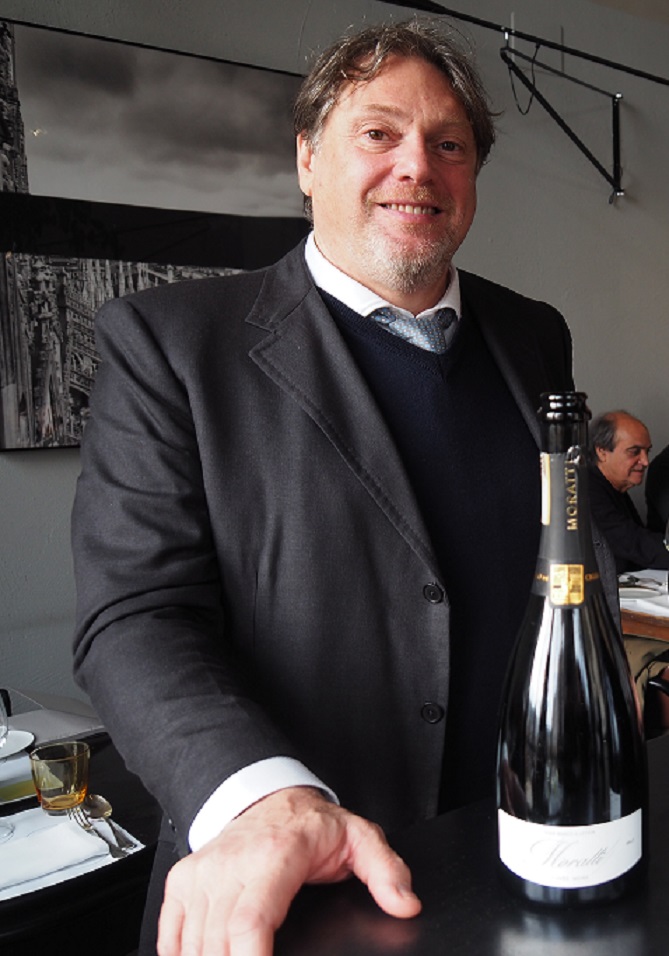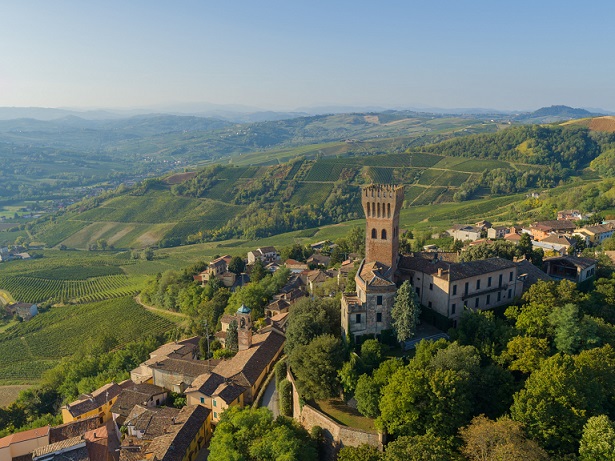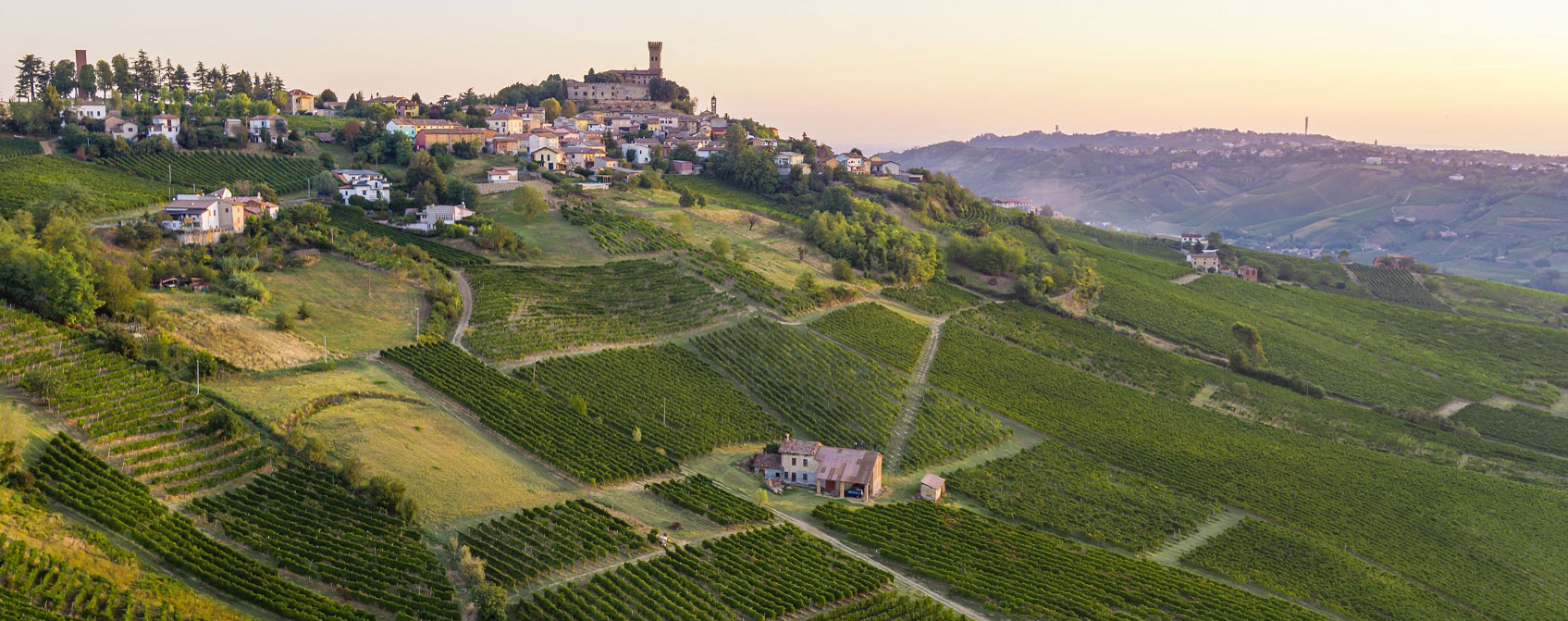“It’s a strange wine,” CEO Gian Matteo Baldi concedes. “It’s not in the taste of everybody, but it’s very interesting because you’ve got all the sweetness on the nose – the vanilla that makes some people think it was fermented in oak, but it was not. It comes from the malolactic fermentation, which at the same time adds a certain kind of complexity. But, still, you’ve got the straightness, the freshness of the pas dosé.”
The wine, called RDM (‘recently disgorged manually’), is a happy accident from the 2014 vintage. It spent 60 months on lees in the bottle before the tricky isobaric disgorgement. Tricky because the MLF threw a lot more sediment.
Castello di Cigognola, which markets its classic-method blanc de noirs under the owner’s surname, Moratti, has about 3,000ha of Pinot Noir planted on its steep slopes and hills southwest of Milan.
It has been experimenting with all aspects of the process since Gabriele Moratti took over the running of the Oltrepò Pavese-located cellar from his parents, Gian Marco and Letizia, in 2018. The experiments include MLF at different stages of the process prior to tirage. But they didn’t mean to start it in the bottle.

Gian Matteo (above) says: “A certain degree of randomness is necessary to find new ways: the known leads you always to the same path, mistakes during a search can lead you to new different views. At the beginning MLF wasn’t an objective, especially as it’s difficult to manage in the bottle. Then it became an opportunity to develop a new path: some of the best white wines do MLF in the bottle, so why not exploit this opportunity with a sparkling? The challenge was in the disgorgement, and that is why we had to do a very special one with lots of dexterity involved.”
Although this wine has been a hit at tastings, the method has been tweaked in subsequent vintages to remove some of the associated risk and guarantee consistent quality in the bottle.
Gian Matteo explains how this experiment has developed: “We decided to continue this path with a version with spontaneous fermentation, and MLF, though staying a shorter time on lees, and anticipate the MLF before tirage for a better control for the next few times.” The next version of this wine has been on lees for only 36 months.
Gian Matteo adds that once they understand the process and outcome better, “we will maybe go on trying in the bottle”.

Like all the Moratti sparkling wines, the RDM is made from organic Pinot Noir grapes grown in vineyards located around the historic 12th-century castle on top of the Oltrepò Pavese hill. The Moratti family owns 36ha in the region, of which 28 are vineyards.
Getting “excellent phenolic ripeness” is not a problem here and the winemakers – in-house oenologist Francesca Elli and consultants Federico Staderini, Nicolas Secondé, and Beppe Caviola – like to whole-bunch press the mature fruit.
In recent vintages they have experimented with the pressing fractions, under the guidance of French sparkling wine consultant Secondé, to get different nuances and “positive characteristics” in their base wines. Gian Matteo’s hope is this will create “a different picture altogether” for sparkling wines made in the region from Pinot Noir.
They are now dividing the juice into six fractions – “slowly getting closer to the seed” – but for the RDM 2014 base wine there were only three fractions.
The fractions from each plot and clone are vinified separately, giving them 40-50 different components for their base wines. “Each one is a kind of shade of a colour and then, when we have done the base, we can mix this colour as you do in a painting,” Gian Matteo says.
The must was fermented with a pied de cuve made in the vineyard. This is added into the stainless-steel tanks with the fermentation usually controlled at 16°C (around 20°C for the 2020 base wine with MLF).
Regarding the price of the RDM, Gian Matteo says there’s about a 20% premium over Moratti’s most popular wine, the Cuvèe 'More Brut, which only spends 24 months on lees.
Gian Matteo sums up the philosophy in the cellar this way: “In a world where there is such a huge offer of different kinds of wines coming from different parts, there wasn’t a need for something normal and we thought there’s a need for something – if we were able to – something special.”













.png)






